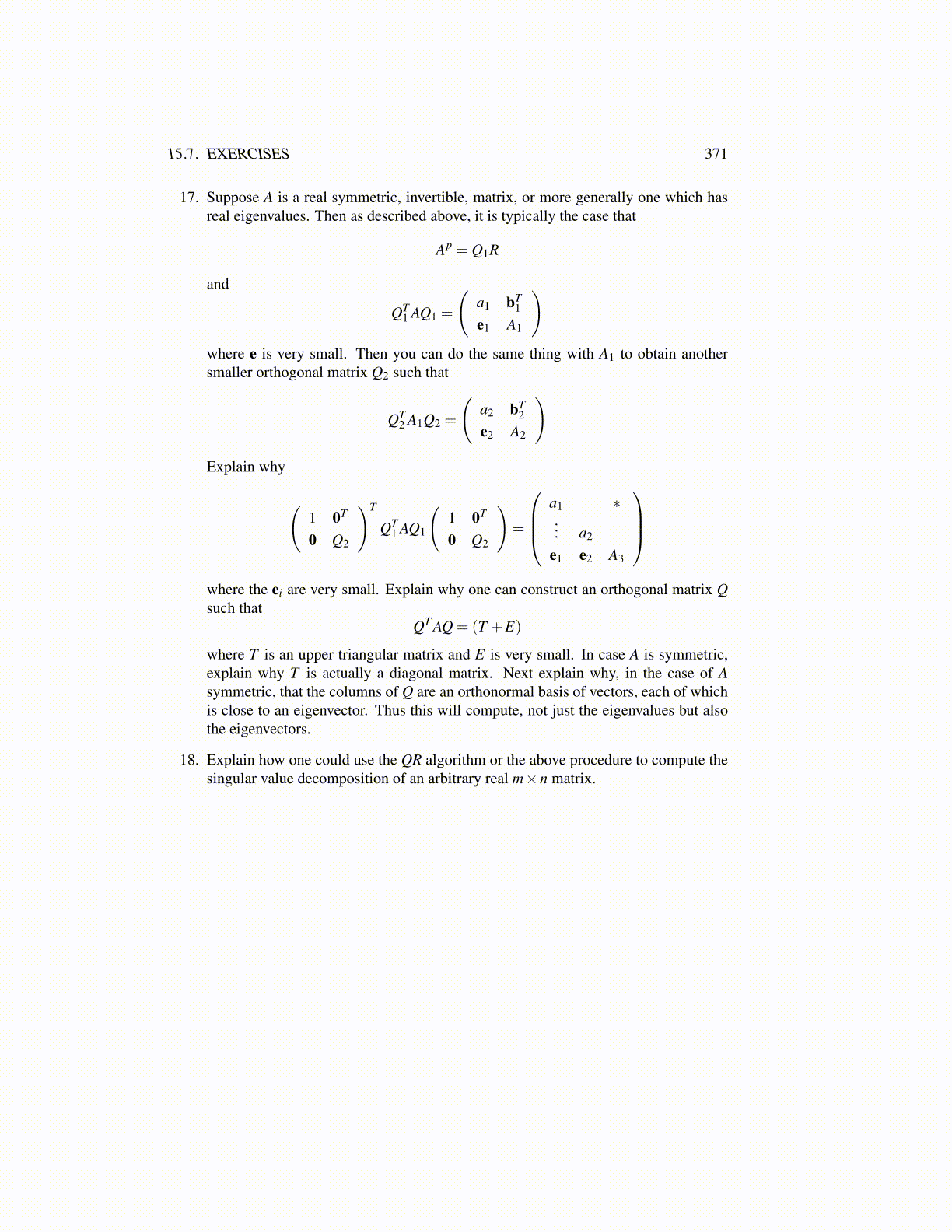
15.7. EXERCISES 371
17. Suppose A is a real symmetric, invertible, matrix, or more generally one which hasreal eigenvalues. Then as described above, it is typically the case that
Ap = Q1R
and
QT1 AQ1 =
(a1 bT
1
e1 A1
)where e is very small. Then you can do the same thing with A1 to obtain anothersmaller orthogonal matrix Q2 such that
QT2 A1Q2 =
(a2 bT
2
e2 A2
)
Explain why
(1 0T
0 Q2
)T
QT1 AQ1
(1 0T
0 Q2
)=
a1 ∗... a2
e1 e2 A3
where the ei are very small. Explain why one can construct an orthogonal matrix Qsuch that
QT AQ = (T +E)
where T is an upper triangular matrix and E is very small. In case A is symmetric,explain why T is actually a diagonal matrix. Next explain why, in the case of Asymmetric, that the columns of Q are an orthonormal basis of vectors, each of whichis close to an eigenvector. Thus this will compute, not just the eigenvalues but alsothe eigenvectors.
18. Explain how one could use the QR algorithm or the above procedure to compute thesingular value decomposition of an arbitrary real m×n matrix.